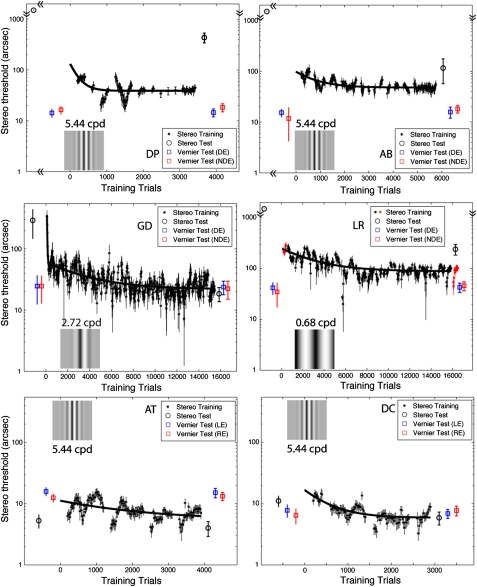Fig. 2.
Results for experiment 2 showing stereo threshold as function of the number of training trials. The data were grouped by different days. For each day, the initial 180 trials were used to estimate the first threshold, and subsequent thresholds were estimated after every 36 trials based on the previous 180 trials. DP and AB (Top Row) had no stereo perception before training but achieved it through experiment 1. GD (Middle Row Left) already had stereo perception before training. LR (Middle Row Right) had no stereo perception and no stereo training beforehand. AT and DC (Bottom Row) were normal observers who, like observers DP, AB, GD, and LR, had experience in viewing through the stereoscope in binocular combination tasks before training. Each measured point (black asterisk) was the average of thresholds in both Near and Far directions, estimated by fitting a psychometric function (Fig. 7). Because of the large response bias, the first-day stereo threshold for observer LR could not be measured in the Near direction and was taken only in the Far direction (red asterisks on day 1; for comparison, the stereo threshold for the last day also is specified in this way). Stereo tests (circles) with stimuli that contained no monocular cues (PDT achieved by adding substantial positional jitter in the range from −827 to +827 arcsec to the target) were given before and after training. Before training, strabismics LR, AB, and DP were stereoblind (>1,320 arcsec, represented by circles without error bars at the top of the plots). Monocular Vernier tests (squares), using the same setup and the same stimuli as in stereo training, also were given before and after training. Error bars: ± 1 SE.

